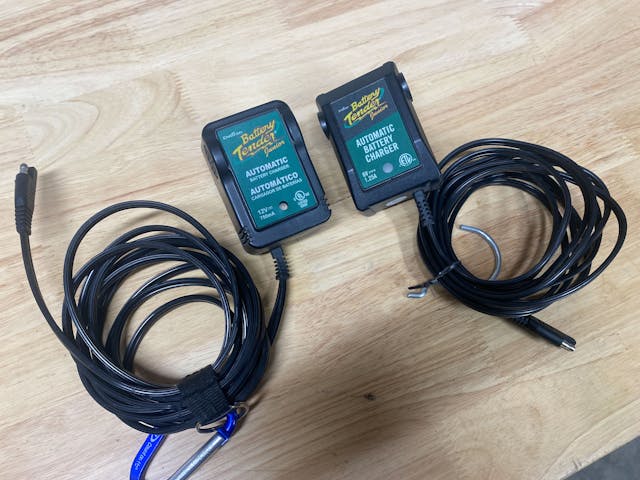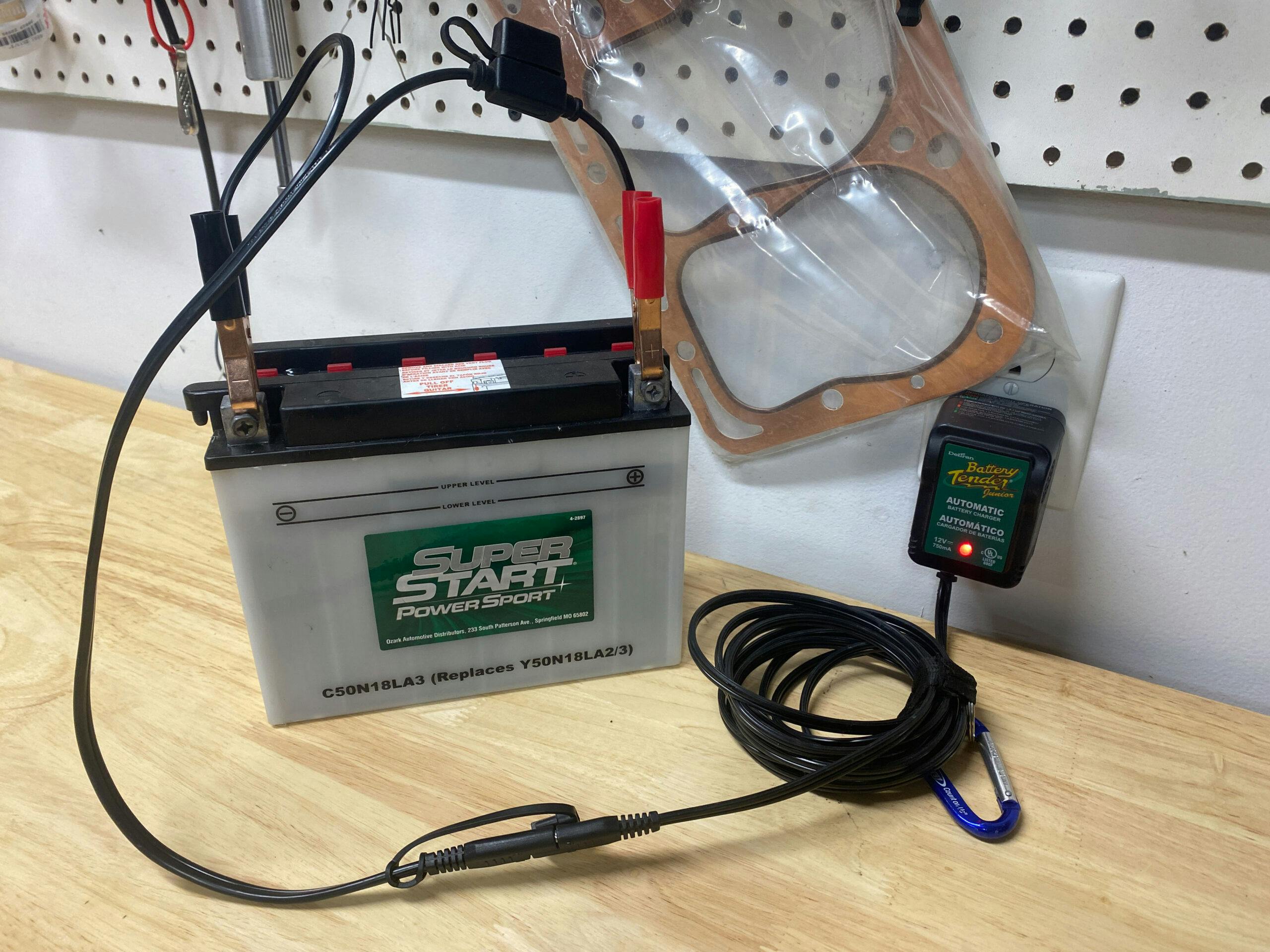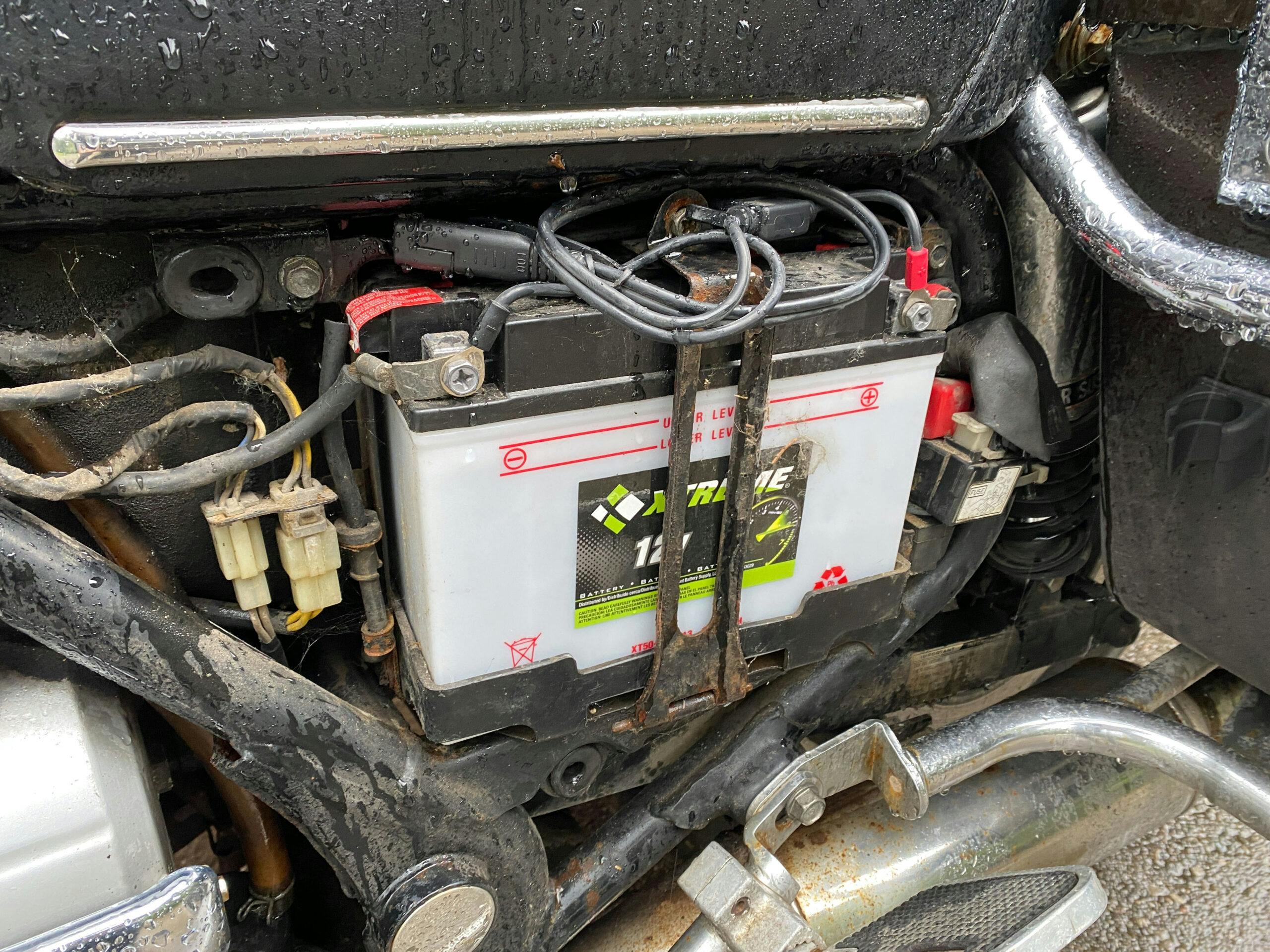Media | Articles
3 tips for storing car batteries
No, this is not an article about EVs. The vast majority of internal-combustion cars have been equipped with some type of electrical storage device for over a century, yet few understand the details of them or how to properly care for the various types you might encounter.
Maintaining a battery to last for years is not an exacting science, but it is a science. We won’t pull you aboard a time machine and drag you back to your senior-year chemistry class, but with the weather changing and cars heading for slumber in parts of the country, it’s a good time to review what you should know about this vital automotive component.
Batteries are important for a variety of reasons. They provide the current needed to spin the starter motor, ensure the ignition has proper voltage, excite the charging system, and more.
Technology has advanced significantly over the years, but many of the principals around how batteries work, and how to best care for and feed them, have not. Knowing these best practices will save you money, peace of mind, and even time.
Lead acid vs. AGM vs. lithium ion

The first thing to talk about is construction. Most batteries look more or less the same—the exterior is commonly a plastic case with two terminals, one positive and one negative.
Marketplace
Buy and sell classics with confidence
The most basic and common battery that you will encounter in vintage cars is a flooded lead-acid. These consist of multiple electrode plates suspended in a case flooded with a mixture of acid and distilled water.
The next step up is an absorbed glass mat (AGM) battery, which is functionally the same a flooded lead-acid. The biggest difference in an AGM battery is that the positive and negative plates are separated by fiberglass mats that absorb the mixture of acid and water to prevent it from sloshing.
AGM batteries can be sealed, and thus are often easier to mount since the acid is captured in the fiberglass mats. You can position them with the terminals facing any direction—up, down, or sideways—without worrying about leaks. By comparison, a standard lead-acid battery requires venting as they do emit gas during regular charge/discharge cycles. That vent dictates how the battery needs to be mounted.

For even more benefits, you can leave lead-acid behind completely and switch to a different chemical makeup—lithium ion. These batteries are smaller, lighter, can handle being fully discharged much better, and operate better across a wider range of temperatures. Of course everything comes with a drawback, and the big one here is that lithium-ion does not tolerate being overcharged, as I found out a few months ago.

All three of these types work well in automotive starting applications, where the rate of discharge and charge are not extreme and large amounts of storage is not required. Each has strengths between cost, ease of use, and lifespan that owners will need to balance when selecting the right one for their ride.
Trickle vs. maintenance vs. regular charging
Type “battery charger” into your search engine of choice and you will be inundated with options and likely paralyzed by choice. Depending on what you do, there probably is not one single charger that will fit all of your needs. Here is a quick breakdown of the three types.
Regular: This is meant to quickly top up a battery that has been discharged. Bringing one back from fully empty to a usable level takes time, and a regular charger is your best bet to get back on the road the fastest.
However, it is not the right tool for keeping a battery in top charge while not being used. Proper use would require using a regular charger for a short period every 30–45 days, depending on discharge rate. Remembering to connect and disconnect the charger appropriately can be tough and could lead to damage if the battery is overcharged or let go until it’s completely flat.
Trickle: A trickle charger slows down the rate of charge being put into a battery, increasing the voltage slowly. It can sometimes revive batteries that a regular charger would damage. The trickle charger is perfect for long-stored cars, but there is still no cutoff which means if left on indefinitely, this type of charger could still damage your battery.
Maintenance: The maintenance charger was created to solve the problem of overcharging. This is essentially a “smart” trickle charger that detects battery voltage and, when it senses the battery is topped off, tapers or stops charge flow periodically. When the maintenance charger cuts charge, it allows the battery to discharge naturally. When the voltage drops low enough, it will begin charging again.
This prevents both overcharging and the battery going completely flat by taking the guesswork out of putting a charger on and keeping track of voltages. This is our recommendation for any car that is not regularly driven. Both six-volt and 12-volt maintenance chargers can be found for prices that won’t break the bank. (Certainly for less than the cost of a new battery every few years!)
Removal vs. maintaining in place
This one is less about the battery and more about the vehicle. We all agree that maintaining a battery is important, but is leaving it out in a cold car still acceptable? Most batteries want to be kept at temperatures of around 75 degrees Fahrenheit. If your car rests somewhere much chillier than that for extended periods of time, you risk decreasing the capacity of the battery. Maintenance chargers can help by keeping the voltage at a level that won’t degrade the battery or damage the electrolytes, but the decision is more involved than simply stringing up a charger and ducking out of the snow.
Modern cars, with all their techno-wizardry, often need a constant battery connection and voltage in order to keep the computers happy. While removing the battery might seem ideal to keep the battery at proper temperature, it might be better to leave it in place and find a way to keep it charged appropriately.
For vintage cars that don’t even have a clock to reset if power is disconnected, the removal option should be considered in order to extend the life of the battery. Everything in life is about trade-offs, and replacing a battery more often—remember, a battery is a consumable wear item, like tires—in order to keep the finicky computers happy might be the right choice.
Batteries are often overlooked until the moment they die or otherwise leave us stranded. An ounce of prevention is worth a pound of cure though, which means properly selecting and caring for your car’s battery can give you years of trusty starting and driving.
Check out the Hagerty Media homepage so you don’t miss a single story, or better yet, bookmark it.




















…and my son, Brad’s OEM Volvo battery lasted 20 years.
Every Battery Eventually Leaks
So – don’t leave them in the car!
We have all seen batteries with mounds of white crusty corrosion around their terminals.
You might think only cheap / old batteries do that.
Not so much!
I’ve had two Optima Red Top spiral cell AGM batteries vent and leak acid from the vent ports, and the terminals. The negative terminal on the last one pushed out of the battery case slightly (~1/8″) and the acid ruined a perfectly good and no longer available battery cable.
Bottom line: take the batteries out of your cars and set them in plastic trays to contain leaks!
I purchased “The JC Penny Battery” when the original battery in my ’70 Chevelle gave up in approx. 1974. It cost about 1/3 more than a standard battery however JCP honored the lifetime warranty for over 45 years. I had to take the battery to Firestone to complete the exchange. JCP offered me $150 to void the warranty but I plan on keeping the car so I declined the offer. I hope they continue the practice. I occasionally place a Battery Tender Jr on the car but not constantly. I cooked one of those warranted batteries by leaving it on charge without checking the electrolyte level often enough.